Improve energy efficiency of assets
The industry push for sustainability is slowly turning all parts of the plant and refinery operations green as sustainability managers, C-suite management, and ESG teams constantly look for opportunities to reduce emissions and meet environmental, social, and governance (ESG) goals. While much of the industry has been focusing on the promises of renewable energy, green hydrogen, and carbon capture – which will be an important component in the transition to net zero emissions – one effective way to reduce emissions in the short term is to operate more efficiently with what you already have: your equipment and assets.
Energy use in the industry contributes to around 24.2% of global emissions.1 In asset-intensive industries, with many energy-intensive processes, a significant amount of Scope 1 emissions can be attributed to the daily operations and energy required to operate the motors, pumps, compressors, and other process equipment that is required. With the increasing investor pressures on sustainability performance, and government regulations on emissions, what actions can be taken in the short-term to improve ESG performance? And can they be done quickly, with minimal capital investment, fast return on investment, and only utilizing existing equipment and assets? One potential answer to these questions involves applying the right asset management strategy and energy and emissions management solutions.
The hidden cost. The hidden cost from inefficient assets resulting from not optimizing energy usage and emissions can add up quickly. Up to 50% of non-feedstock operating costs are energy related in process industries. As such, small process inefficiencies ultimately lead to large increases in cost.
Common sources of asset inefficiencies can come from:
- Degrading or damaged equipment not operating efficiently.
- Limited visibility into the relationship between asset performance and energy consumption leads to unrecognized inefficiencies.
- Constantly changing plant conditions need real-time recommendations and insights to optimize operations.
These asset inefficiencies not only increase energy costs, but can also negatively impact ESG performance, which leads to an increased business risk. The hidden cost of not optimizing asset energy and emissions can be significant, but there are software and technologies currently available that can help to solve these challenges and contribute to sustainability and profitability goals.
The opportunity: improve efficiency through energy and emissions management. According to an International Energy Agency (IEA) estimate, improving operational efficiency and energy efficiency in the process industries has the potential to reduce a company’s carbon footprint by up to 15%.3 In another report by the IEA, it was discussed that energy intensity improvement is declining from previous years. From 2011 to 2016, energy intensity improved at an average rate of 2.3%/yr, while in the last five years energy intensity has only improved at an average rate of 1.5%. This decreased rate of improvement is far short of the 4.1% needed annually to reach net zero by 2050, and leaves a significant potential for cost and emissions improvement.4
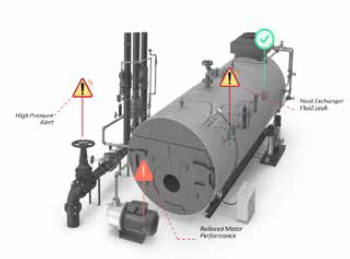
FIG. 1. Asset inefficiencies can be present in all types of major equipment. Degrading performance can not only lead to increased costs but also sustainability, safety, and operational risk.
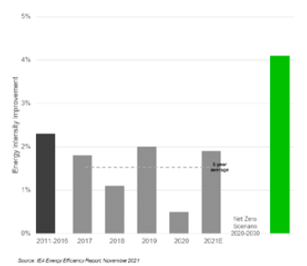
FIG. 2. Energy intensity improvement since 2017 has been significantly lower than the previous five years. The average rate of improvement needs to increase almost 2.6% more than current levels to meet the net-zero emissions scenario.
Same assets, a new strategy. Sustainability and asset performance management are not new concepts to the process industries. Since the mid-1990s, asset performance management solutions have traditionally been focused on preventing downtime and improving asset reliability. However, with the growing focus on industrial sustainability, there is an increased need to include energy targets as one of the main drivers for maintenance actions. Asset performance monitoring can help identify operational and design losses and recommend maintenance actions to help improve asset energy performance. Including these energy targets shifts from the traditional focus on preventing downtime towards helping assets run at their optimum while optimizing for energy and emissions.
Small steps lead to big improvements. When trying to identify areas of emissions improvement in a plant or refinery, a ‘data first’ approach that relies on insights from advanced analytics and cutting-edge technologies is required. To avoid the challenges of typical energy and emission management solutions, a ‘crawl-walk-run’ approach is needed. This approach enables enough time for operational adoption of the new technology, as well as enough time to successfully implement it and realized its value. The following steps are recommended when implementing an energy and emissions management solution:
- Evaluate your current digitalization maturity and understand what opportunities are available or potential improvements are needed. Find solutions that help break down data and operational silos and allow for true transparency.
- Identify critical assets and processes that have the most potential for improvement. Following the 80/20 rule: what 20% of assets or processes have the potential to see 80% improvements? By doing this, the initial investment and implementation costs can be greatly reduced.
- Develop a maintenance and sustainability strategy that capitalizes on access to real-time data and insights. Ensure that all individuals from the operator to C-suite adopt these solutions. By prioritizing best practices in energy and emissions management, companies will experience the biggest impact and return on investment (ROI) from energy and emissions solutions. The small steps are taken implement energy and emissions solutions in targeted phases, and slowly transforming the organization to utilize and make decisions from these solutions can lead to big improvements over time. Three key features that energy and emissions management solutions should provide are the ability to:
- Monitor energy consumption: Vendor agnostic solution that allows enterprise-wide performance analysis of assets, and real-time monitoring and validation of energy usage and emissions.
- Visualize energy and emission performance: Configure energy analytics dashboards provide powerful insights into energy usage. Users can quickly identify the root cause of energy and emission inefficiencies.
- Utilize powerful analytics and reporting: Robust library of fixed and mobile asset models.
The big picture: emissions management framework. Improving energy intensity and managing emissions from critical assets are just one part of the puzzle toward reaching net-zero emission goals. Looking at the bigger picture, solving the enterprise emissions problem requires viewing the end-to-end emissions framework and filling the gaps in companies’ sustainability strategies through small steps and improvements. From sensors and measuring emissions at the site level all the way up to corporate reporting, the enterprise emissions management framework consists of six connected parts:
- Consult – perform a baseline assessment on sustainability strategy and emissions reduction plans. Develop risk and investment strategy for green technologies.
- Measure – identify and categorize greenhouse gas (GHG) emission sources. Collect and utilize data from sensors and processes to calculate and quantify emissions
- Monitor – view near real-time, enterprise-wide visual intelligence on energy and emissions. Drill down from enterprise to site to asset levels and view energy and emission data.
- Predict – obtain emissions insights, perform what-if analysis, benchmark, and offset emissions.
- Reduce – reduce emissions through efficiency improvements and by switching to renewable energy sources.
- Report – regulatory compliant environmental reporting for mandatory and voluntary disclosure.
A complete sustainability strategy will require end-to-end scalable solutions that have the necessary traceability and transparency required for mandatory and voluntary emissions disclosures.
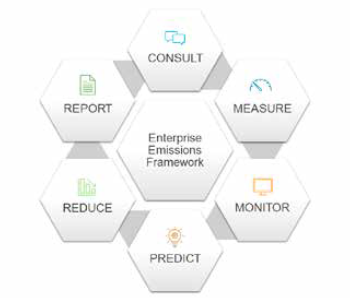
FIG. 3. Enterprise emissions framework for developing a complete emissions strategy.
Takeaway. In summary, the emissions challenge will not be solved easily. Many technologies are currently being developed, such as green hydrogen or carbon capture, that will help address emissions from the process industries. As the adoption of these sustainable technologies grows, it will take a complete, end-to-end emissions reduction strategy to efficiently meet the needs of the net-zero-emissions future. Reaching a future such as this will not happen overnight, but will instead require a crawl-walk-run approach over time utilizing innovative solutions.
As part of this approach, implementing energy and emissions management solution can have a real impact on reducing energy costs and emissions from critical assets and equipment. Using existing equipment, improvements from energy and emissions management software solutions can be seen quickly, with minimal capital investment, to help save costs and the environment.
References
- https://ourworldindata.org/emissions-by-sector
- https://www.chemicalprocessing.com/articles/2012/optimizeenergy-petroleum-refineries-part1/#:~:text=Energy%20use%20accounts%20for%20approximately%2050%25%20of%20refining%20costs.
- Based on International Energy Agency (IEA) Data and CustomerNet-Zero Strategies
- IEA Energy Efficiency Report, November 2021


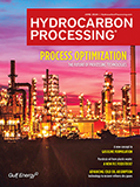
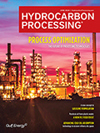


Comments